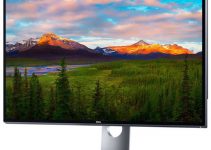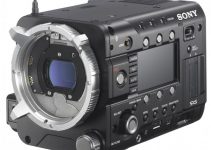Documentary work is an interesting area for filmmakers looking to make it a career. It doesn’t look like it’ll be easy to start making money from some of the work, but it actually can turn into a fairly lucrative career.
You’ll need to work your way up and when you hit the next level you’ll have to make sure you are charging appropriately.
Figuring out how much to charge is often a mystery.
Filmmaker Luc Forsyth wants to help and details the most common career progressions and the financial information you’ll need along the way. He even details some rates that can guide you on setting your own prices.
Luc is taking a look at the career of documentary filmmakers from the very beginning. For that, you might even want to consider starting out by working for free on other sets.
If you are brand new you’ll have a tough time getting on jobs if you are expecting pay with little to no experience.
However, helping out on larger productions can get you the experience you need as well as the connections to start getting real jobs later on.
The point where you might be able to progress beyond this is once you have a 1-2 minute reel to show off and some experience to make you comfortable.
Another note is that this is for aspiring professionals and not for documentarians looking to create their own projects and release them themselves.
This is for people hoping to work on larger projects and make a living through the work.
Most people will be looking into mainstream productions since there is going to be more money available.
Rates are going to be a bit of a mixed bag depending on the types of crews you are working with.
Larger productions and international crews will tend to pay similar rates in various locations whereas small indie documentaries may have fluctuating rates based on the market they are working in.
It can make things tough to break in but making those connections early on (and maintaining those relationships) is incredibly important.
Getting yourself into a position where people know you and want to work with you is step one to getting reliable income.
Camera Assistant
After you have done some of the groundwork you can start getting some paying gigs. The first rung on the ladder is likely as a camera assistant. Even if you are a capable DP, you always have to pay your dues as an AC.
Compared to fiction productions, the AC on documentary work is usually the one being tasked with any of the necessary work that needs to be done to get the shot.
This work, like getting lenses or pulling focus, may be divided on a fiction set, but not so much on documentaries.
A key skill to have is anticipating problems before they happen. This includes:
- Getting new batteries before power runs out
- Monitoring media storage space
- Organizing media
- Setting up lights
- Blacking out windows
- Setting up lavalier mics
- Anything else the DP needs help with
If you can be ready before the task becomes urgent you will find that DPs will want to work with you.
Average Rate: $250-350/day
AC/Camera Operator
Sometimes called a swing tech or field assistant, the AC/camera operator position is the next step in the journey. It is usually an AC that takes on some additional responsibilities, such as handling a B or C camera.
You probably won’t always be shooting, but you can start building a serious reel at this point. Make sure to collect your shots before the production ends.
This is when you are an experienced AC and start doing some shooting.
Average Rate: $450-650/day
The $450 rate is a fair place to start and it really only bumps up to that $650 range if the job is exceptionally tough for some reason, such as being in a remote location or relying heavily on drone operation.
B Cam or Second Shooter
Now you are fully a shooter. The B cam operator or second shooter follows the lead of the DP and is shooting effective coverage and pickup shots for the production.
This job should complement the work of the DP while staying out of the way of the A camera.
Bad things you can do are shooting in a completely different style, getting in the way of the A cameras shots, or just generally not helping out with coverage.
Ideally you will have solid drone experience and plenty of time behind a cinema camera.
You need to be comfortable picking up any camera and getting it running. Framing and composition should be intuitive as nobody wants to be micromanaging their second shooter.
You’ll really just need some time behind a camera to get into a good position here.
Average Rate: $550-650/day
Also, take advantage of working closely with DPs to pick up as much knowledge as possible. Usually, after working as a B cam for a while someone will take a chance on you as a DP. Likely this will be for a smaller production.
Director of Photography
By this point, you should be dialed in on your style and fundamentals. If you don’t have the base skills down you’ll crash and burn quickly.
Baseline: $650-750/day
When you get started a more conservative rate works for a few reasons. Smaller productions will have smaller budgets and it might convince someone to take a chance on a less experienced DP.
After you have some DP experience under your belt then you should start increasing your rates.
Average Rate: $850-1,000/day
Most production companies aren’t going to want to extend beyond these rates without having gotten awards or have other reasons to command a premium.
Renting Your Gear
While those DP rates are solid for making a living you may want to bring in some additional cash. One way to do that is by renting your gear.
Big fiction film productions will generally be working with expensive rented equipment, but documentary productions will often ask that you have some of your own gear.
You’ll want to invest in a basic kit so that you are prepared to handle these situations. Look at what equipment the production companies you are working with tend to use as aligning with them will make it easier to get jobs since your gear just slips right in.
When you bring some of your own equipment to a production, you can charge them the rental fee to cover your investment on it.
Over time you’ll make up some of your investment while also using the equipment to get some jobs.
Just make sure you aren’t going crazy and overspending on a ton of cameras and lenses. If you grow slowly and do it well you might even be able to pull in more than you make on shooting with the rental costs.
Look at what rental companies in your area are charging and knock down your rates by 10-15%.
Picking up used equipment is a good option for saving cash as it is very important to not overextend yourself.
Now, these rates seem high, but that is to account for the fact that you aren’t going to be working every single day and that there are a lot of unknowns in life that you need to balance out.
And, if there is something you want to work on you should still take the job even if the rates are lower than what your expect.
What do you think about these rates? Is this helpful?
[source: Luc Forsyth]
Disclaimer: As an Amazon Associate partner and participant in B&H and Adorama Affiliate programmes, we earn a small comission from each purchase made through the affiliate links listed above at no additional cost to you.




